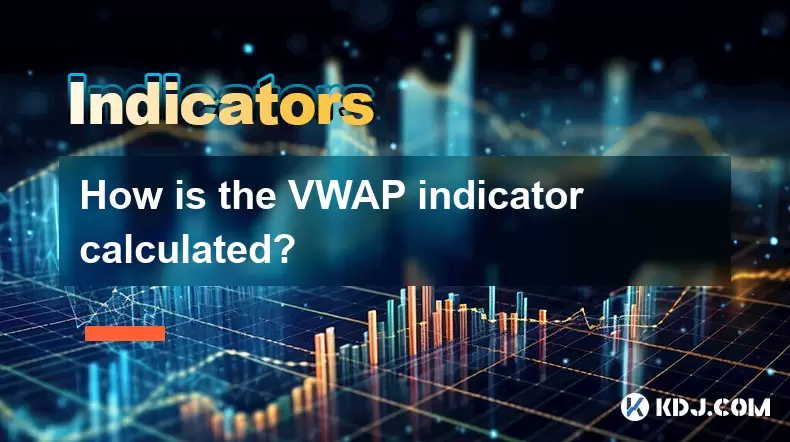-
 Bitcoin
Bitcoin $114600
-0.61% -
 Ethereum
Ethereum $4748
0.55% -
 XRP
XRP $3.011
-0.88% -
 Tether USDt
Tether USDt $0.9998
0.01% -
 BNB
BNB $860.2
-3.44% -
 Solana
Solana $203.7
0.53% -
 USDC
USDC $0.9999
-0.01% -
 TRON
TRON $0.3655
0.76% -
 Dogecoin
Dogecoin $0.2295
-3.41% -
 Cardano
Cardano $0.8945
-2.14% -
 Chainlink
Chainlink $25.54
-0.83% -
 Hyperliquid
Hyperliquid $43.53
-0.72% -
 Sui
Sui $3.623
-3.18% -
 Stellar
Stellar $0.4057
-1.44% -
 Ethena USDe
Ethena USDe $1.000
-0.01% -
 Bitcoin Cash
Bitcoin Cash $595.4
1.68% -
 Avalanche
Avalanche $25.04
-4.28% -
 Hedera
Hedera $0.2444
-2.06% -
 Litecoin
Litecoin $118.7
-2.38% -
 UNUS SED LEO
UNUS SED LEO $9.583
0.01% -
 Toncoin
Toncoin $3.313
-1.22% -
 Shiba Inu
Shiba Inu $0.00001280
-2.96% -
 Uniswap
Uniswap $10.93
-2.67% -
 Polkadot
Polkadot $4.042
-2.65% -
 Dai
Dai $0.9999
0.00% -
 Bitget Token
Bitget Token $4.658
-1.75% -
 Cronos
Cronos $0.1573
1.68% -
 Aave
Aave $346.4
-3.15% -
 Monero
Monero $269.6
3.35% -
 Ethena
Ethena $0.6947
-7.13%
How is the VWAP indicator calculated?
VWAP calculates the average price of a cryptocurrency weighted by volume, helping traders identify fair market value and optimal entry/exit points.
Aug 12, 2025 at 02:01 pm

Understanding the VWAP Indicator
The Volume Weighted Average Price (VWAP) is a widely used technical analysis tool in cryptocurrency trading. It represents the average price of an asset weighted by the volume traded at each price level over a specified time period. Traders rely on VWAP to determine the fair market value of an asset based on both price and volume. Unlike a simple moving average, which only considers price, VWAP integrates volume, making it more reflective of actual market activity. This makes it especially valuable in markets with high volatility, such as the cryptocurrency market, where large trades can significantly influence price.
Core Components of VWAP Calculation
To compute VWAP, two primary data inputs are required: typical price and volume. The typical price for a given time interval (such as a 5-minute candle on a chart) is calculated using the formula:
- (High + Low + Close) / 3
This value represents the average price at which the asset traded during that period. The volume refers to the total number of units (e.g., BTC or ETH) traded in that same interval. These two components are combined to determine the price-volume product, which is essential for the cumulative calculation of VWAP.Step-by-Step Calculation Process
The VWAP is not a static calculation; it is cumulative and recalculated with each new time period. The process begins at the start of the trading session or selected timeframe (e.g., 24 hours in crypto). Here is how it unfolds: - Calculate the typical price for the first interval using (High + Low + Close) / 3
- Multiply the typical price by the volume of that interval to get the total dollar value traded
- Sum up all the price-volume products from the beginning of the period to the current interval
- Sum up all the volumes from the beginning of the period to the current interval
- Divide the cumulative price-volume sum by the cumulative volume sum to get the VWAP value for that point in time
This calculation repeats with each new candle, updating the VWAP dynamically. Most trading platforms perform this automatically, but understanding the underlying mechanics helps traders interpret its behavior accurately.
Practical Example Using Cryptocurrency Data
Suppose you are analyzing a BTC/USDT trading pair over three 1-hour intervals. Here is how VWAP would be computed: - Interval 1: High = $30,000, Low = $29,500, Close = $29,800, Volume = 100 BTC
Typical Price = (30,000 + 29,500 + 29,800) / 3 = $29,766.67
Price × Volume = 29,766.67 × 100 = 2,976,667 - Interval 2: High = $30,200, Low = $29,900, Close = $30,100, Volume = 150 BTC
Typical Price = (30,200 + 29,900 + 30,100) / 3 = $30,066.67
Price × Volume = 30,066.67 × 150 = 4,510,000 - Interval 3: High = $30,500, Low = $30,100, Close = $30,400, Volume = 200 BTC
Typical Price = (30,500 + 30,100 + 30,400) / 3 = $30,333.33
Price × Volume = 30,333.33 × 200 = 6,066,666Now, cumulative values:
- Total price-volume sum = 2,976,667 + 4,510,000 + 6,066,666 = 13,553,333
- Total volume = 100 + 150 + 200 = 450 BTC
- VWAP = 13,553,333 / 450 = $30,118.52
This result indicates that, on average, BTC was traded at $30,118.52 per BTC weighted by volume over the three-hour window.
Implementing VWAP on Trading Platforms
Most cryptocurrency trading platforms, including Binance, Bybit, and TradingView, offer built-in VWAP indicators. To apply VWAP: - Open the chart for your desired cryptocurrency pair
- Click on the "Indicators" button or search bar
- Type "VWAP" and select the indicator from the list
- The VWAP line will automatically appear on the chart, typically starting from the beginning of the day or the first visible candle
- Adjust settings if needed, such as resetting the calculation period or changing the line color
Some platforms allow customization, such as resetting VWAP at specific intervals (e.g., every 4 hours), which is useful for intraday strategies. Traders can also combine VWAP with other tools like standard deviation bands to create VWAP envelopes, helping identify overbought or oversold conditions relative to volume-weighted price.
Common Misconceptions and Clarifications
A frequent misunderstanding is that VWAP is a predictive tool. In reality, it is retrospective and reactive, based entirely on historical price and volume data. It does not forecast future prices. Another misconception is that VWAP can be calculated using only closing prices. This is incorrect—VWAP requires the typical price (using high, low, and close) to reflect the full trading range. Additionally, VWAP resets at the beginning of each session, which in crypto often means it resets based on the chart’s visible range or a user-defined anchor point, unlike traditional markets that follow fixed trading hours.Frequently Asked Questions
Q: Can VWAP be used on any time frame?
Yes, VWAP can be applied to any chart time frame—1 minute, 15 minutes, 1 hour, etc. However, its reliability increases with higher volume periods. On lower time frames with sparse volume, the indicator may be less stable.Q: Why does VWAP reset during the trading session?
VWAP typically resets at the beginning of a new trading session. In cryptocurrency, since markets operate 24/7, the reset point depends on the platform or user settings. Some traders manually reset VWAP at specific times (e.g., UTC 00:00) to align with daily cycles.Q: Is VWAP suitable for all types of crypto traders?
VWAP is most beneficial for day traders and institutional investors who execute large orders and want to gauge average execution prices. Long-term investors may find it less relevant compared to other indicators like moving averages or on-chain metrics.Q: How does VWAP differ from a simple volume-weighted moving average?
While both incorporate volume, VWAP is cumulative from a starting point, whereas a volume-weighted moving average (like VMA) uses a fixed lookback period. VWAP emphasizes the entire session’s data, making it ideal for assessing execution quality over time.
Disclaimer:info@kdj.com
The information provided is not trading advice. kdj.com does not assume any responsibility for any investments made based on the information provided in this article. Cryptocurrencies are highly volatile and it is highly recommended that you invest with caution after thorough research!
If you believe that the content used on this website infringes your copyright, please contact us immediately (info@kdj.com) and we will delete it promptly.
- Crypto Crossroads: Dogecoin, Stellar, and the Search for 2025's Top Coin
- 2025-08-24 19:25:32
- Bitcoin Price Swings, BTC News & Remittix: What's Hot Now?
- 2025-08-24 18:45:35
- Cryptos, Market Cap, 2025 Potential: Spotting the Next Big Thing
- 2025-08-24 16:45:35
- Shiba Inu vs. Layer Brett: Price Prediction and the Meme Coin Evolution
- 2025-08-24 17:05:29
- Dogecoin Price Prediction: Will DOGE Bark or Bite?
- 2025-08-24 17:45:26
- XRP Price: Analyst Prediction of $7-$8 in Few Weeks?
- 2025-08-24 17:45:26
Related knowledge

What does it mean when the +DI and -DI cross frequently in the DMI indicator but the ADX is flattening?
Aug 11,2025 at 03:15am
Understanding the DMI Indicator ComponentsThe Directional Movement Index (DMI) is a technical analysis tool composed of three lines: the +DI (Positive...

What does the sudden appearance of a "dark cloud cover" candlestick pattern during an uptrend indicate?
Aug 13,2025 at 11:35am
Understanding the 'Dark Cloud Cover' Candlestick PatternThe dark cloud cover is a bearish reversal pattern in technical analysis that typically appear...

What does it mean when the moving average, MACD, and RSI all send buy signals simultaneously?
Aug 11,2025 at 01:42pm
Understanding the Convergence of Technical IndicatorsWhen the moving average, MACD, and RSI all generate buy signals at the same time, traders interpr...

What does it mean when both the KDJ indicator and the RSI show overbought signals simultaneously?
Aug 13,2025 at 11:35am
Understanding the KDJ Indicator in Cryptocurrency TradingThe KDJ indicator is a momentum oscillator derived from the Stochastic Oscillator, widely use...

What does it mean when the price is trading above the SAR indicator but the red dots are densely packed?
Aug 09,2025 at 11:49pm
Understanding the SAR Indicator and Its Visual SignalsThe SAR (Parabolic Stop and Reverse) indicator is a technical analysis tool used primarily to de...

What does it mean when the candlestick chart forms a "Morning Star" but trading volume is sluggish?
Aug 12,2025 at 06:28pm
Understanding the Morning Star Candlestick PatternThe Morning Star is a three-candle bullish reversal pattern commonly observed in cryptocurrency pric...

What does it mean when the +DI and -DI cross frequently in the DMI indicator but the ADX is flattening?
Aug 11,2025 at 03:15am
Understanding the DMI Indicator ComponentsThe Directional Movement Index (DMI) is a technical analysis tool composed of three lines: the +DI (Positive...

What does the sudden appearance of a "dark cloud cover" candlestick pattern during an uptrend indicate?
Aug 13,2025 at 11:35am
Understanding the 'Dark Cloud Cover' Candlestick PatternThe dark cloud cover is a bearish reversal pattern in technical analysis that typically appear...

What does it mean when the moving average, MACD, and RSI all send buy signals simultaneously?
Aug 11,2025 at 01:42pm
Understanding the Convergence of Technical IndicatorsWhen the moving average, MACD, and RSI all generate buy signals at the same time, traders interpr...

What does it mean when both the KDJ indicator and the RSI show overbought signals simultaneously?
Aug 13,2025 at 11:35am
Understanding the KDJ Indicator in Cryptocurrency TradingThe KDJ indicator is a momentum oscillator derived from the Stochastic Oscillator, widely use...

What does it mean when the price is trading above the SAR indicator but the red dots are densely packed?
Aug 09,2025 at 11:49pm
Understanding the SAR Indicator and Its Visual SignalsThe SAR (Parabolic Stop and Reverse) indicator is a technical analysis tool used primarily to de...

What does it mean when the candlestick chart forms a "Morning Star" but trading volume is sluggish?
Aug 12,2025 at 06:28pm
Understanding the Morning Star Candlestick PatternThe Morning Star is a three-candle bullish reversal pattern commonly observed in cryptocurrency pric...
See all articles

























































































